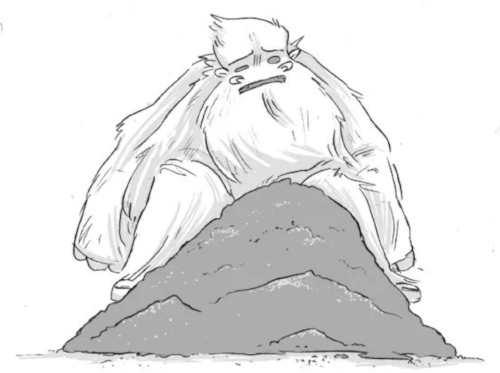The Feature Snowball

The “feature snowball”, as I like to call it, is a product and time management technique I’ve been successfully implementing for the last 10 years or so. I’ve used it across many personal projects, work projects, and consulting projects with great success.
Today, I’d like to explain what the feature snowball method is, why you may (or may not) want to adopt it yourself, and how it’s worked out for me in my own life.
But first, let me tell you a little bit about myself.
My Background in Tech
I’ve been programming for nearly 20 years at the time of my writing this, 11 of which have been professional. Through my professional tech career, I’ve primarily worked on small projects: things a single person (or small group of people) could build and maintain.
Because of this, I’ve always had to fulfill the roles of a developer, product manager, QA engineer, DevOps practitioner, DBA, SEO expert, marketer, salesperson, frontend designer, and security auditor all at once. I haven’t ever worked on teams large enough where there were dedicated people to handle these functions.
Struggling with Productivity

Because I’ve always had to wear a lot of hats while working on projects, early on in my career I often struggled with productivity. The biggest productivity obstacle for me has always been how to prioritize my work.
For example, while I was growing ipify I had to decide whether I’d build developer libraries in a number of different programming languages, write docs for the website, optimize the backend infrastructure for performance, reduce hosting cost, improve the website design, support IPv6 lookups, or perform marketing tasks to help grow the service.
While each of these tasks was critical to the success of the service, I could only work on one thing at a time. This meant I had to think about and consciously choose which of these important tasks I’d work on.
Now, I don’t know about you, but picking what to work on has always been the hardest part for me.
Before I discovered the feature snowball method, I’d spend hours (sometimes days) carefully thinking through which tasks I’d work on next, how important each was in comparison to the others, and how much I was looking forward to (or dreading) each task.
I’d sometimes reflect back on the week and realize I had spent countless hours feeling anxious and dreading work only because I wasn’t sure where I should spend my time. Some people call this “analysis paralysis” or “decision fatigue”, but whatever you want to call it, it’s always been a pain in my ass.
Thinking About Productivity

One day, early on in my career, I was getting a shower and thinking through what I had to work on the following week. As usual, I had a neverending list of important things to do. The more I thought about what I had to do the following week, the more anxious I felt.
In order to combat my increasing anxiety about work, I decided to think about all the things I had finished at work over the last week. As I went through the list, I started to feel better. And not just a little better, I started getting excited.
The more I thought about all the things I had accomplished, the more I wanted to get back to work and finish more things. I could feel the momentum building, and I didn’t want it to slow down.
This gave me an idea: what if next week I just finished as many things as possible from my todo list? What if I just picked the easiest things to work on, exclusively focused on those, and built as much momentum as possible?
The more I thought about it, the more excited I got. By the time my shower ended I was all in on my new productivity experiment.
The Productivity Experiment

The following week at work was amazing.
Instead of painstakingly debating with myself about what to work on, I took a quick look at my tasks, picked whatever seemed the simplest, and focused all my effort on whatever that was.
I distinctly remember crossing five or six long standing tasks off my list that day, which made me feel amazing. The more things I finished, the more productive and less anxious I felt.
By the end of the week, I felt like a completely different person. I was excited about my work, I wasn’t anxious, and I had knocked a ton of items off my todo list. I was on a roll.
My boss at the time (if you’re reading this: hi David!) told me, after the sprint ended, that he was impressed I had finished so much. My velocity had more than doubled through the course of the sprint.
After that week ended, I decided to keep the experiment going for another week. That second week turned into three weeks, which turned into a month, which quickly turned into the last 10 years.
The Feature Snowball Method

The feature snowball method, as I like to call it, is a simplistic product and time management system in which you determine priorities based on how quick something is to complete.
Instead of deciding which features to build, bugs to fix, or tasks to work on based on business or personal priority (which is the typical way prioritization happens), instead you decide what to work on based on only a single variable: how long will it take to finish?
If you’re deciding between writing email copy for an upcoming marketing campaign, fixing a bug in your Dockerfile, or building out that new feature your company wants: do some quick analysis to figure out how much time each task will take, then get to work on the smallest task.
Much like the debt snowball method for paying down debt, the feature snowball method prioritizes momentum over everything else. The idea is that by getting quick wins and gradually reducing the things you need to do, you’ll be able to stay focused, motivated, and make progress towards whatever it is you’re trying to accomplish: whether that be building a product, cleaning your house, or working on passion projects.
Why You May Want to Use the Feature Snowball Method

If you’re working in a small team or on some sort of personal project/hobby, the feature snowball method can be a great way to “get over” the anxiety and productivity dips that many people (like me) experience when they’re overwhelmed.
I’ve found that by ceding control of my priorities to a simple system, I’m able to execute on what I need to do without any anxiety. In turn, this makes me more productive and I end up accomplishing more. The net result is that my work efficiency goes up: I spend more of my time making progress on projects and less of my time managing priorities.
In my professional life, I also use the feature snowball method extensively, including at my current job as the Head of Evangelism at Okta. I use Trello to manage all my work tasks, and each week I prioritize my tasks by complexity and knock them off one at a time, least complex first.
Of course, there are exceptions to the rule.
For example, a few months ago we were preparing to launch our yearly conference, Oktane, so I had to completely ignore my backlog and exclusively focus on Oktane-specific tasks in order to wrap things up.
Were these Oktane-specific tasks always the simplest things to do? Definitely not! But, within the list of urgent Oktane tasks I had to attend to, I still followed the feature snowball method as much as possible.
Each week I’d sort through what urgent tasks had to be completed, then I’d simply tackle each task in order of how quick I could complete them. By utilizing the feature snowball method in this manner, I’m able to remain effective at work while still keeping my momentum up and anxiety down.
Why You May Not Want to Use the Feature Snowball Method

There are, of course, many situations in which you wouldn’t want to use the feature snowball method.
For example, while my current job is fairly independent in that I can choose what to work on and, for the most part, can accomplish what I need to solo, there are many jobs where that isn’t an option.
If you’re working on a project and have a strict deadline to get a feature out the door, you may very well need to work on whatever is most urgent.
Likewise, if you’re working on a project that involves working with other people in some sort of synchronous manner, you may not have the luxury of deferring a task simply because it’s more complex than another.
I guess what I’m saying is that your mileage may vary. Use common sense, and don’t sacrifice important tasks for the sake of a productivity philosophy.
My Results with the Feature Snowball Method

As I mentioned near the start of this article, I’ve been successfully using the feature snowball method for the last 10 years or so. It’s not only helped me to improve my productivity, but it’s helped me enjoy my work more.
If you’re the type of person who feels excited and motivated when they finish projects and cross things off their todo list, you may want to give the feature snowball method a try. It’s completely changed the way I work, my outlook, and the daily enjoyment of what I do every day.
PS: If you read this far, you might want to follow me on Bluesky or GitHub and subscribe via RSS or email below (I'll email you new articles when I publish them).